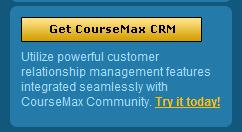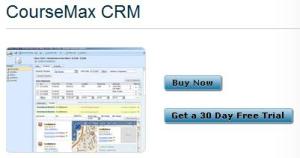Today I am inspired and I want to share my thoughts about what has led me to this point and why I am inspired. Most entrepreneurs go through a pattern of trying something, struggling and failing, recovering from the damage, changing course, trying again, improving, failing, having some success, failing again, recovering, then rinse, repeat, and do it all over again. If they learn from their mistakes, each cycle brings about a better result and new ideas. You learn what not to do and you gain experience and insight. If you’re an honest person with integrity, failure doesn’t usually mean some catastrophy where you go bankrupt and leave all of your customers, employees, partners, and vendors in the cold. It might mean having a bad year then taking your business in a new direction. Or, it might mean selling your business before you achieved all that you set out to do.
This has been my pattern although I’ve mostly kept the damages to a minimum. Failing is a relative term and it really all depends on how you look at it. As many others have said in many different and eloquent ways, you learn from every “failure” and it is only by failing that you grow and improve. Success for most or all entrepreneurs is a red herring in any case since we’re all searching for some realization of a dream that is perfect in every sense. Sergey Brinn and Bill Gates have achieved success beyond most people’s imagination but I’d be willing to bet that, while they have certainly had moments where they felt a great sense of accomplishment, they are still not completely fulfilled. It’s what drives them. You’ll work and struggle through all of the hard times and long hours for those great days when the vision becomes reality.
It’s the process of trial and error that results in the ideas and the execution of those ideas getting better and better. If you are an entrepreneur (either in practice or in denial) I think a lot of what I’m saying will resonate with you. Actually, I think everyone is really an entrepreneur, it’s just that most of the population is in denial. In their heart, everyone on the planet wants to create something and leave their mark on the world in some form. So, in my mind, everyone has an entrepreneurial spirit inside them, we just vary in the degree in which we supress it. Every entrepreneur I’ve listened to or read about has the desire to build or create something. It isn’t about getting rich and impressing your friends with the “pimp ride” you drive. Then again, that might be nice <insert smirk here>. Money alone isn’t enough to drive someone to take unnatural risks. It’s about coming up with a great idea and turning it into something that other people will love and maybe even pay you for. You get to share that feeling of accomplishment with all of the people that helped you develop the vision and make the vision a reality which is even better.
As I write this post, I have the feeling that I have a complete vision of the best business concept or model I have ever pulled together. I didn’t sit down in a coffee shop with some buddies on Sandhill road and come up with it over a couple chocolate mocha lattes. It is a “vision” or clarity that is the confluence of many bits, pieces of information or concepts that have come from my experiences with customers and colleagues, things that I’ve read, and successful patterns that have worked for other companies. There is a point when a whole bunch of ideas come together and turn into a simple yet elegant concept. That happened yesterday and once it did that’s when the inspiration came. When you are inspired, the challenges that once looked so large immediately become small because you can see your way through them so easily. Now I can’t stop thinking about it and planning and working on it. Everything I’ve done in the past and everything I’m doing now are part of this vision. It isn’t about doing something completely new or something that hasn’t been done before. It is about doing things in a different way, with a different approach. It is in this new approach that suddenly makes the idea so compelling.
What makes a business or business model great? Business books, magazines, and financial articles are filled with with financial formulas, PE ratios, and quarterly reports that we use to judge the value of a business. Financial results are important and I’ll never go into a business where it isn’t likely that we’ll have a great return on our investment. But when it comes down to it, what matters most is that people love what you make or do for them. This is why I’m so inspired. I’m inspired because this vision is about a business that’s good for our customers, our future employees, our vendors, and our partners. I know people are going to love it and I know it will be successful. Steve Jobs, who I admire in many ways, understands this concept probably better than anyone and that’s why we have iPods, iPhones, Macs, and Pixar movies that everyone loves.
A little over three years ago, at Intelligix (an IT services company I founded and sold before achieving all I set out to do) we, in working with a CRM customer of ours, Sunset Learning, came up with the concept for a new business called CourseMax with a vision to build great software for training companies that they could use to run their business better, make more sales, generate more profits, and provide better service to their customers. We were smart enough to know that moving from a professional services business into a software product business would be really difficult but dumb enough to do it anyway. Not only that, we were starting a Software as a Service (SasS) business back when I didn’t even know the term SaaS existed, if it did. We just called it the ASP model or hosted software, which is the same thing in any case. Needless to say, we made probably every mistake you can make. It was more of an expensive hobby for me since I was still working full-time and then some at Intelligix until a year ago.
The concept of CourseMax evolved and we began to think about ways to use the software to connect these training companies with their customers, other training companies, and suppliers. We thought about it as a “Training Marketplace” What we didn’t understand completely was that we would also be creating a “social grid” for training. At the time, Mark Zuckerberg and friends had just recently opened membership of facebook outside of Harvard and I certainly hadn’t heard about it. What we were thinking about back then was an online marketplace and community that was tied in to a Customer Relationship Management (CRM) system. This is one aspect of what people are now calling “Social CRM“. It turned out that we didn’t have the money and I didn’t have the time to build out the marketplace and community aspect of the software at the time.
Fast forward to last spring and one thing led to another and the CRM group at Microsoft decided to help us so that we could develop a new version of our software on the newly released Microsoft Dynamics CRM 4.0 platform. This version of CourseMax would have an integration with an online community that would be a channel for training companies to market and sell their services to professionals looking for training. It would also be a way for these companies to connect with their customers, listen to their feedback, and provide these customers with great service. The community was also designed to connect the training companies with freelance instructors and other suppliers that they need to deliver their training services. We had to build a prototype in six weeks so that we could demonstrate it at Microsoft’s Worldwide Partner Conference in Houston. I presented a working prototype on July 11th, 2008. Since then, we’ve been hard at work developing and refining the software into a product that is ready for production. We’ll be releasing the new version of the software to production in 2 weeks on February 23, 2009.
Releasing the new version of CourseMax is huge and will be a very important event. I think people are going to love CourseMax. Even though we are releasing a completely re-tooled software with everything we once thought we wanted to offer our customers, there is a ton more that we want to do with it. We’ll look to the community and our customers to drive what we do next and the software will get better and better.
However, CourseMax and everything I just described is not THE vision or epiphany I had yesterday. CourseMax is an important part of the vision. The work we’ve done, the things we’ve learned, the software we’ve built, and the feedback from customers, beta testers, smart people at Microsoft, and thought-leaders in the CRM and social media space are all part of the vision. However, the vision is much more far-reaching. Where we go from here will help many more customers in an economy where they can use all the help they can get. We’ve learned a lot and our approch going forward is going to be very new and very different. No, I’m not going to spill the beans now but I know people are going to love it.
I can hardly stand not talking about it so, I’m going to post the fragments of ideas and concepts behind the inspiration on Twitter and here on my blog as we are working on getting everything ready until I reveal simple yet elegant concept and the details in early March. I think it will be an interesting way to explain how the concept evolved and why it is powerful. If you are on Twitter, I’m going to use the hashtag #CRM_Liberation and you can find me at twitter.com/danblake.












Filed under: Entrepreneurship | Tagged: #CRM_Liberation, Bill Gates, community, CourseMax, CRM, elearning, Entrepreneur, facebook, learning, marketplace, Microsoft Dynamics CRM, Sergey Brinn, Social_CRM, Social_Media, Steve Jobs, training, twitter | 1 Comment »









































































